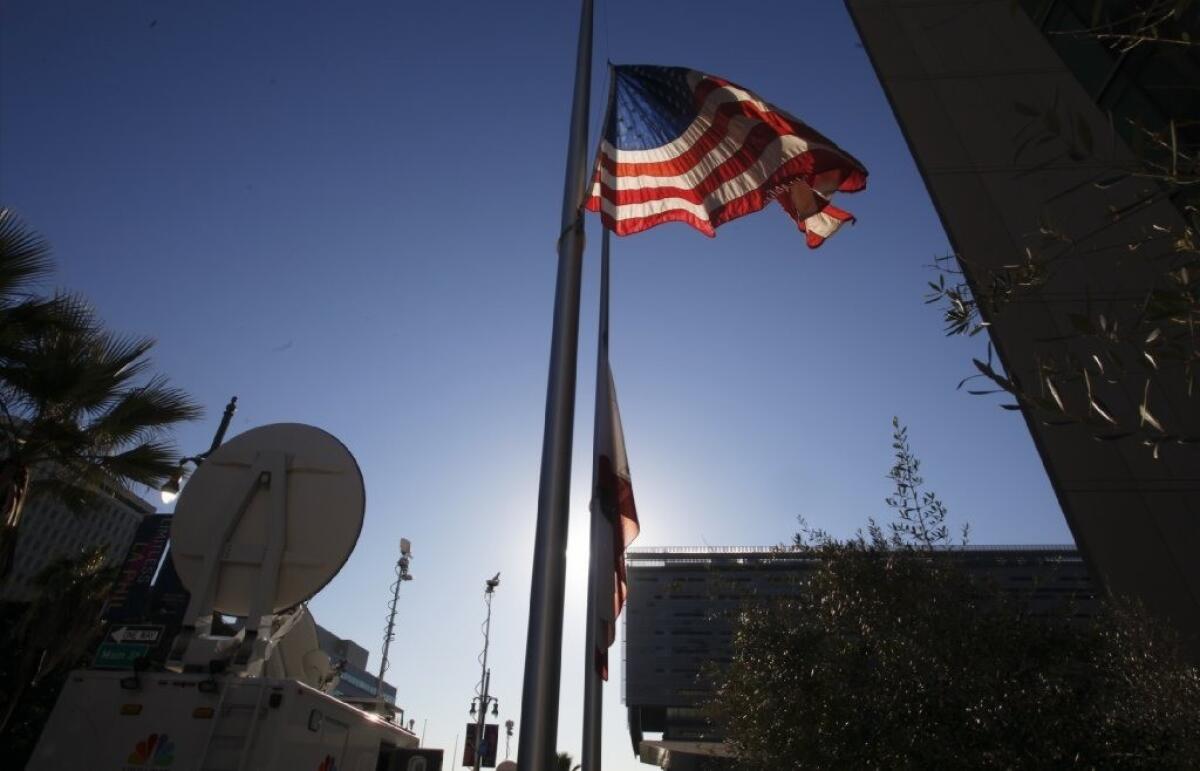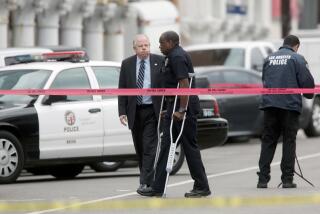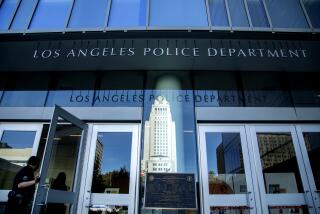A new Christopher Commission for the Christopher Dorner case?

He was, by every account, both a cop killer and a killer cop, and even in death, he might end up shaking the LAPD like no one since Rodney King.
Christopher Dorner regarded himself as a victim of institutional racism and a wronged man unfairly turned out of uniform by the LAPD.
Finding out whether there is any merit to his claims could require the LAPD to open itself to the kind of scrutiny the department underwent with the Christopher Commission 20 years ago, and the federal consent decrees that came on its heels.
FULL COVERAGE: The manhunt for Christopher Dorner
There’s no question that the LAPD is a better department for that scrutiny, especially as far as its public image is concerned. Racial-profiling instances are reported to be down. In this instance the LAPD will have to show that it handles internal matters appropriately, not only in Dorner’s case but in its firing and disciplinary procedures themselves.
No job beef can justify murder. This was not even a heat-of-the-moment workplace shooting. This was, as Dorner’s manifesto laid out, deliberate and methodical, beginning with the killing of a daughter to avenge himself on a father -- the retired LAPD captain who defended Dorner in his hearing and said at the time, “What’s happening here is this officer is being made a scapegoat.” Then Dorner wound up killing two officers from sheriff’s departments a long way from home.
Chief Charlie Beck announced even before Dorner was cornered in a snowy mountainside firefight that the LAPD would reopen his case. Any investigation into Dorner’s history, his crime spree and the LAPD response comes amid the chaff and buzz about the killings and the manhunt that kept Southern California engrossed and alarmed for a week, a chase that didn’t end before those four people -- a young couple and the two lawmen -- had been shot dead and Dorner evidently took his own life.
The LAPD has spent the last 15 or so years rebuilding reputation and community relationships into a civic profile much different from the “occupying force” reputation that was borne out so vividly in the King beating video. The LAPD is now a minority-majority department. It has had two black police chiefs. It sponsors a Martin Luther King Jr. Day breakfast, a kind of town-and-gown for uniformed and civilian L.A. leaders.
It helps too that major crime rates in L.A. are the lowest they’ve been since Ike was in the White House.
But reports of physical abuse that stop short of lethality -- a handcuffed woman who was Tasered, another handcuffed woman hurled to the ground, a woman officer stomping on a restrained black woman’s groin, a young black skateboarder hit on the head, some incidents recorded by police-car video -- are giving serious-minded Angelenos pause. The LAPD regards these as isolated and unrelated cases, but the public sees blue LAPD uniforms, and may connect dots even when the LAPD does not. (Beck is reportedly trying to fire four officers in the Taser incident. Beck was criticized last year by Police Commission members who worry that he has not been tough enough on officers who have killed or wounded people unjustifiably.)
Even so, the swift, vast bloom of left- and right-wing conspiracies about Dorner, the pop-up “go Dorner go” messages that reminded me of people lining Westside streets nearly 20 years ago to cheer the fugitive O.J. Simpson, have been astonishing and unsettling, beyond the circle of the predictably aggrieved. Some people choose to believe that a fired black cop is de facto a victim of racism. Some have concocted a “Manchurian candidate” victim narrative around Dorner. Amid the wanted posters and the million-dollar reward billboards are handmade “Justice for Chris Dorner” signs.
Some have found in the Dorner manifesto an admiration for a man they regard as a tormented warrior for justice and “honor,” a word Dorner uses several times in the document.
A British website was selling “Don’t Shoot, I’m Not Christopher Dorner” T-shirts and bumper stickers, a dig at LAPD officers opening fire on a Latino mother and daughter who were just delivering newspapers, driving past the home of someone the LAPD thought Dorner might be targeting in a truck that bore no actual resemblance to Dorner’s. A few minutes later, in another part of town, different officers fired on another truck that also didn’t match the description of Dorner’s. This explains the makeshift, mocking signs reading “Don’t shoot, I’m white,” and it explains why the LAPD also needs a public accounting of its own conduct during the Dorner manhunt.
What could explain some of the Dorner fan meme was described by Richard Hofstadter, the author of the influential book “The Paranoid Style in American Politics,” some 50 years ago. Hofstadter observed a mind-set that isn’t necessarily right wing but a “sense of heated exaggeration, suspiciousness and conspiratorial fantasy.” The present hysterical resistance to even the most basic gun safety laws is a case study of what Hofstadter was writing about.
Dorner’s “manifesto” has been embraced even beyond the usual circle of the professionally aggrieved. Some seem to regard Dorner as a kind of Robin Hood, perhaps because he didn’t kill the man whose boat he tried to steal, nor the couple he tied up in their Big Bear cabin (never mind those he did evidently kill, including the blameless young couple).
Dorner wasn’t exactly the cunningly elusive assassin he styled himself -- not an Eric Rudolph, the Olympic Park bomber who killed two and wounded scores more in his rampage against homosexuality and abortion. Rudolph acquired a twisted folk-hero following in the five years he survived in the wilderness.
This moment is where a Christopher Commission 2.0 may be in order, or at least a Christopher Commission lite. Dorner’s firing was upheld by a Superior Court judge -- who himself had a few questions about the process -- and by an appeals court. In Dorner’s manifesto and his presumably massive files may be nuggets the LAPD would find hard to digest. Perhaps there are legitimate points about discipline and bias in the department. Ferreting them out might not be pleasant for everyone in the LAPD, but it would be important. A panel of non-LAPD law enforcement, and of L.A. civilians who stand high in public regard, could help answer questions and presumably mend fences.
The department would also do well to mend what may be a weak link: examine how it welcomes returning service members back into the LAPD fold. Dorner served in the naval reserves in Bahrain and Kuwait, and his troubles may date from then. Much more than a banner with “Welcome Home, Job Well Done” is needed -- like a thorough mental fitness evaluation, if it isn’t already being done, before letting a service member exchange one uniform for another and return to the streets.
The LAPD fought hard to get where it is today; it will have to fight hard to retain that place, as it did even before Dorner began his personal “crusade.” And Angelenos’ obligation in this investigation is to act like grownups about Dorner, to separate any bona fide issues from the fringe fabrications, and to take seriously any serious undertakings to get to the bottom of this.
ALSO:
The Times’ endorsements in the March 5 election
More to Read
A cure for the common opinion
Get thought-provoking perspectives with our weekly newsletter.
You may occasionally receive promotional content from the Los Angeles Times.











